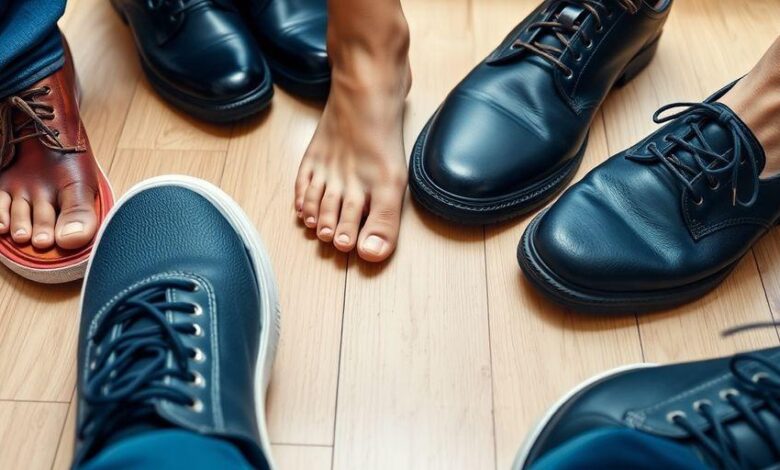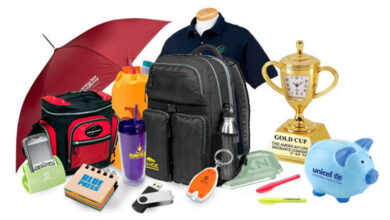How to Choose the Right Shoes for Your Foot Type

It’s easy to overlook the complexity of our feet. They’re the foundation of our movement, and understanding their structure is key to finding comfortable and supportive shoes. Let’s get to know your foot a little better.
Think of your feet as intricate pieces of engineering. Each part plays a role in how you move and feel. Ignoring your foot anatomy can lead to discomfort and even injury.
Knowing your foot type is the first step. It helps you make informed decisions about footwear.
Measuring Foot Length and Width Accurately
Time to grab a ruler! Accurate measurements are the foundation of a good shoe fit. Don’t rely on past assumptions; feet can change over time.
Measure both feet, as one may be slightly larger than the other. Stand with your heel against a wall and measure from the wall to the tip of your longest toe. Also, measure the width at the widest part of your foot.
Use these measurements as a starting point when shopping. Shoe sizes can vary between brands, so knowing your exact length and width is important.
Recognizing Your Foot Arch Type
Arch type matters. It affects how your weight is distributed and the kind of support you need. There are generally three types: normal, high, and flat.
To determine your arch type, do the wet test. Wet the bottom of your foot and step onto a piece of paper. The imprint will reveal your arch. A full footprint indicates a flat arch, while a very thin one suggests a high arch.
Knowing your arch type helps you choose shoes with the right level of support. This can prevent pain and improve comfort.
Identifying Your Toe Box Shape
Toe box shape is often overlooked. But it’s crucial for toe comfort and preventing issues like bunions. Take a look at the shape of your toes.
There are several common toe box shapes. Some are more pointed, while others are more rounded or square. Choose shoes that accommodate your natural toe shape.
Shoes that are too narrow in the toe box can cause discomfort and foot problems. Make sure your toes have enough room to wiggle freely. The right toe box shape can make a big difference in overall comfort and foot health.
Understanding your foot anatomy is the first step in choosing the right shoes. Take the time to measure your feet, identify your arch type, and assess your toe box shape. This knowledge will empower you to make informed decisions and find footwear that supports your feet and keeps you comfortable.
The Importance of Proper Shoe Fit
It’s easy to underestimate how much proper shoe fit matters. Shoes that don’t fit well can cause a cascade of problems, affecting not just your feet but your entire body. Ignoring this can lead to long-term discomfort and even injury.
Think about it: your feet are the foundation of your posture. When your shoes don’t provide the right support—as the experts at Active Feet in the UK note—they can impact your stance and gait. If you’re in the UK and need advice, these guys come recommended in the UK for personalised fittings and orthotic services.
Finding the right proper shoe fit is an investment in your overall well-being. It’s about more than just comfort; it’s about preventing problems down the road.
Let me know if you’d like it refined further!
Why Shoe Size Alone Isn’t Enough
Shoe size is just a starting point. Sizes vary between brands and styles. Don’t assume you know your size; always get your feet measured.
Focus on how the shoe feels, not just the number on the box. A shoe might be your ‘size’ but still pinch your toes or slip at the heel.
Consider the shape of your foot. A shoe that fits one person perfectly might be completely wrong for someone else.
Avoiding Common Foot Problems
Ill-fitting shoes are a major cause of foot problems. Bunions, blisters, and calluses can all be traced back to shoes that don’t fit right.
Shoes that are too tight can compress your toes. This can lead to nerve damage and other painful conditions.
Wearing shoes that are too loose can cause friction. This can result in blisters and other skin irritations.
Ensuring All-Day Comfort
Comfort is key. You should be able to wear your shoes all day without pain or discomfort.
Pay attention to how your feet feel at the end of the day. If they’re sore or tired, your shoes might not be providing enough support.
Consider the activities you’ll be doing in your shoes. A shoe that’s comfortable for walking might not be suitable for running.
Key Considerations When Trying On Shoes
Timing Your Shoe Shopping Trip
Feet swell during the day. Try on shoes later in the afternoon or evening. This helps ensure a comfortable fit all day long.
Consider your typical daily activities. Will you be standing a lot? Plan accordingly.
Don’t rush the process. Give yourself ample time to shop.
Checking for Adequate Toe Space
Ensure enough room for your toes to wiggle freely. Cramped toes can lead to problems.
There should be about a thumb’s width of space. This is between your longest toe and the end of the shoe.
Pay attention to the toe box shape. A wider toe box is often better.
Assessing Heel and Midfoot Stability
Heel slippage is a no-go. The heel should fit snugly and securely.
Midfoot support is also key. It prevents overpronation or supination.
Walk around the store. Test the shoe’s stability on different surfaces. Make sure the shoe feels right.
Matching Footwear to Your Activities
It’s important to match your footwear to what you’re doing. Different activities demand different shoe features. Wearing the wrong shoes can lead to discomfort or even injury.
Consider the specific needs of each activity. This ensures optimal performance and protection. Think about the impact and movement involved.
Proper footwear enhances your experience. It also supports your feet correctly.
Selecting the Right Running Shoes
Running shoes are built for forward motion. They need cushioning and support for impact. Look for shoes with good shock absorption.
Consider the type of running you do. Trail running shoes have more traction. Road running shoes are lighter and more flexible.
Footwear should fit well and feel comfortable from the start.
Choosing Supportive Walking Footwear
Walking shoes prioritize comfort and stability. They often have a lower heel-to-toe drop. This promotes a more natural stride.
Look for shoes with good arch support. A cushioned midsole is also important. This helps absorb impact during each step.
Walking footwear should be lightweight and breathable.
Finding Versatile Cross-Training Options
Cross-training shoes need to handle a variety of movements. They should offer stability for lateral movements. They also need cushioning for jumping and running.
Look for shoes with a flexible sole. This allows for a wide range of motion. A supportive upper is also important for stability.
Cross-training footwear should be durable and comfortable for various activities. Consider the types of workouts you do most often when choosing a pair.
Evaluating Shoe Construction and Materials
Prioritizing Breathable Upper Materials
It’s all about comfort. Breathable materials are key. Think about it: your feet are trapped in shoes all day. You want something that lets them breathe, right?
Materials like mesh or certain knits allow air to circulate. This helps prevent sweat and keeps your feet cooler. Less sweat means fewer blisters and less foot odor.
Look for shoes that advertise their breathability. Your feet will thank you.
Seeking Flexible and Supportive Soles
The sole is the foundation. It needs to be both flexible and supportive. It’s a balancing act.
A flexible sole allows your foot to move naturally. This is important for walking and other activities. A sole that’s too stiff can cause discomfort and even pain.
Support is equally important. The sole should provide cushioning and stability. This helps protect your feet from impact and prevents injuries.
Understanding the Role of Arch Support
Arch support is a big deal. It helps distribute your weight evenly across your foot. This can prevent pain and discomfort.
Different people need different levels of arch support. Some people have high arches, while others have flat feet. It’s important to find shoes that match your arch type.
Consider trying different types of shoe construction to see what feels best. Some shoes have built-in arch support, while others require inserts. Experiment to find the right fit for you.
Specialized Footwear Needs
Addressing Specific Foot Conditions
Certain foot problems demand specialized footwear. Ignoring these needs can worsen the condition. It’s about finding the right fit for comfort and support.
Consider conditions like plantar fasciitis, bunions, or flat feet. Each requires different features in a shoe.
Proper footwear can alleviate pain and prevent further complications. Don’t underestimate the impact of the right shoe.
Considering Orthotic Compatibility
Orthotics can significantly improve foot function. But, not all shoes work well with them.
Look for shoes with removable insoles. This allows space for your custom or over-the-counter orthotics.
Orthotics need a stable base to function correctly. A shoe with a flimsy sole won’t provide adequate support, negating the benefits of the orthotic.
When to Consult a Foot Specialist
Sometimes, self-help isn’t enough. If pain persists, see a podiatrist.
A specialist can diagnose complex issues. They can also recommend specific specialized footwear or treatments.
Don’t delay seeking professional help. Early intervention can prevent long-term problems.
Conclusion
Picking out the right shoes for your feet is a big deal. It’s not just about how they look, but how they feel and how they help your body. When shoes don’t fit right, it can cause all sorts of problems, not just for your feet, but for your ankles, knees, and even your back. So, taking the time to figure out your foot type and then finding shoes that really work for you can make a huge difference. It can help you stay comfortable and active for a long time. Remember, good shoes are an investment in your well-being, so choose wisely.




